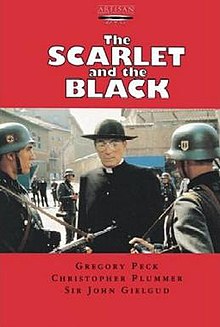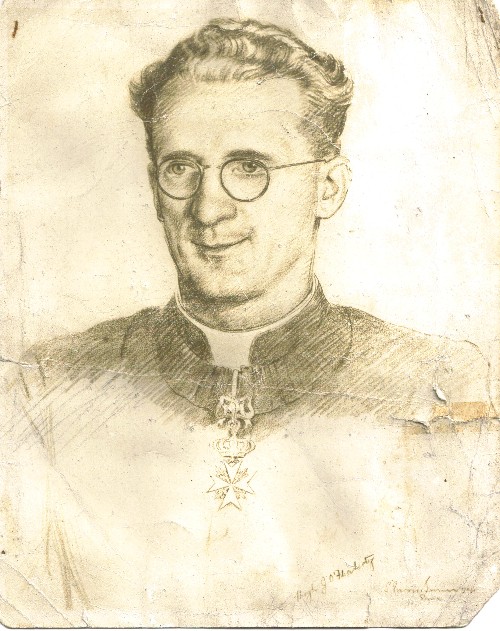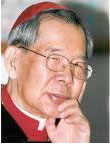Both Lala and Queen Elizabeth II have have two birthdays, the real one and the official one. Lala’s official birthday is 27 September and she turned 32 two days ago. Queen Elizabeth’s official birthday is celebrated in 53 Commonwealth countries, but not on the same date. Only the Falkland Island observes her official birthday on her real one, 21 April. In the United Kingdom the Queen’s official birthday can be on the first, second or third Saturday in June. She turned 85 on her last birthday.
While there’s no confusion about the date of birth of Queen Elizabeth, there is about that of Lala. The young Princess Elizabeth was born in a palace in London. Lala was found shortly after birth in a trashcan in Cebu city in the central Philippines. Those who found her took her to the Asilo De La Milagrosa, the orphanage of the Daughters of Charity there. The Sisters noticed that the little girl had Trisomy 21 (Down Syndrome) and took her in and raised her. Since they didn’t know who her parents were they had to choose a name for her.
The Sisters chose 'Vicente' as her family name, in honor of St Vincent de Paul, and 'Louilla' as her Christian name, in honor of St Louise de Marillac. The two saints founded the Daughters of Charity in France in 1633. Lala, as all her friends know her, probably has something else in common with St Louise. She was almost certainly born out of wedlock, as the saint was, and, like St Louise, never knew her mother. I suspect that Lala’s mother, probably very young and unmarried, panicked – this possibly added to when she saw that her daughter wasn’t 'normal' - and left her baby where someone could find her and take care of her.
I first met Lala in Cebu in 1992 at a Faith and Light celebration. We had just begun a community there, after a retreat given by the co-founder of the movement, Jean Vanier, a Canadian layman, in Holy Family Retreat House, Cebu City, in October 1991. During the retreat he gave a public talk in the auditorium of St Theresa’s College, as I recall, and a group of interested people got together after that. The gathering at which Lala was present included members of Faith and Light from Manila who had come to tell us more about the movement.
I could see immediately that Lala had a special gift – she’s a natural 'ice-breaker'. Though she seldom says anything, she lights up any group into which she comes, unless she’s in a bad mood, which happens from time to time.
Lala became a member of our Faith and Light community in Cebu but I lost contact with her when I went to Lianga, Surigao del Sur, in 1993 as parish priest and to Manila the following year to become vocation director of the Columbans. But one day when I visited the L’Arche community in Cainta, Rizal, known as 'Ang Arko', I was surprised to see Lala there. L’Arche, the French for 'The Ark' as in Noah’s Ark, was founded by Jean Vanier, in 1964 when he invited two men with learning disabilities, Raphael Simi and Philippe Seux, who had been living in an institution, to join him in a small cottage he had bought and was renovating in the town of Trosly-Breuil, France. Jean had no intention of founding anything, but he realized very quickly that he had made a commitment to these two men. One of them, I forget which, chose to live independently some years later, something he could never have done had he stayed not met Jean. Out of these small beginnings has grown an international movement of about 130 residential communities where those with learning disabilities are enabled to live in a family-type situation and to develop their abilities to the greatest extent possible.
Jordan and Raymon, now young men, were welcomed by Ang Arko when they were very young. Both have physical as well as learning disabilities. The original house was in Manila but the community moved later to Cainta.
In Holy Week 2001 I attended the international pilgrimage of Faith and Light to Lourdes as chaplain to the group from the Philippines. Lala was one of the twelve or so Filipinos.
The Easter Vigil was celebrated in the underground basilica. Some of the Old Testament Vigil readings were dramatized. During the account of creation when the words 'God created man in his image; in the divine image he created him' were read, a spotlight shone on a young man in a wheelchair. But what moved me most was when 'Lala' was part of a group dramatizing the reading of the Exodus.
I simply marveled at the fact that a young woman who should never have been born, according to the 'wisdom' of so many, left after birth among garbage, was on the other side of the world helping to proclaim the Word of God to thousands of people, many like herself, and doing so with the joy that permeates her soul.
Queen Elizabeth has been blessed by God with a long and healthy life, in which she continues to serve her people with dignity. Though Queen Elizabeth is among the richest people in the world, Lala, also with her two birthdays, enjoys even greater riches, because the words of Mary’s prayer, the Magnificat, have been revealed in her life: 'God has lifted up the lowly'.
Rafael Simi (left) and Jean Vanier (right).
You can listen to an interview with Jean here. He turned 83 on 10 September.
This comment was posted when I first posted this three years ago:
Wow..I can't believe Im actually sitting here reading this post about Lala..This is wonderfull..Well, I actually grew up with Lala in the orphanage at Asilo dela Milagrosa..we are the same age..I was there from 1986-1994 until I was sent here in America to be adopted..The first time we were introduce to Lala we were a little nervous, we were very young and we never met someone like her, then she started to sing 'Tomorrow' and for some reason we were all drawn to her..As I remember, I was a little jealous because she was always happy, didnt care what everyone thought of her, she welcomed every visitor we had with a smile, she's very friendly..After I finished high school, I started working as a volunteer camp councelor but I was assigned in the office and there was this girl and she is also my age and I was ask to be her counselor for a couple of months and I was so excited, nobody knew why I was glad to do so and it all because I remembered Lala, it was 8 yrs. ago that i work at the camp, and here I am writing and remembering Lala..
I would like to thank you Fr. Sean for writing this post..

















